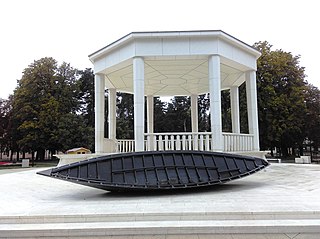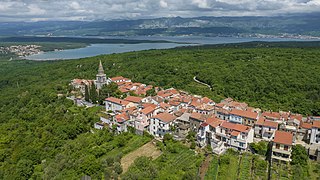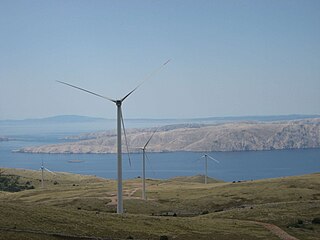
The demographic characteristics of the population of Croatia are known through censuses, normally conducted in ten-year intervals and analysed by various statistical bureaus since the 1850s. The Croatian Bureau of Statistics has performed this task since the 1990s. The latest census in Croatia was performed in autumn of 2021. According to final results published on 22 September 2022 the permanent population of Croatia at the 2021 census had reached 3.87 million. The population density is 68.7 inhabitants per square kilometre, and the overall life expectancy in Croatia at birth was 78,2 years in 2018. The population rose steadily from 2.1 million in 1857 until 1991, when it peaked at 4.7 million. Since 1991, Croatia's death rate has continuously exceeded its birth rate; the natural growth rate of the population is negative. Croatia is in the fourth stage of the demographic transition. In terms of age structure, the population is dominated by the 15 to 64 year‑old segment. The median age of the population is 43.4, and the gender ratio of the total population is 0.93 males per 1 female.

Bjelovar-Bilogora County is a county in central Croatia.

Primorje-Gorski Kotar County is a county in western Croatia, most of it based in the historical and cultural region called Croatia proper and some of it in Istria, that includes the Bay of Kvarner, the surrounding Northern Croatian Littoral, and the mountainous region of Gorski kotar. Its center is Rijeka. The county's population was 296,195 at the 2011 census.

Lika-Senj County is a county in Croatia that includes most of the Lika region and some northern coastline of the Adriatic near the town of Senj, including the northern part of the Pag island. Its center is Gospić.

Šibenik-Knin County is a county in southern Croatia, located in the north-central part of Dalmatia. The biggest city in the county is Šibenik, which also serves as county seat. Other notable towns in the county are Knin, Vodice, Drniš and Skradin.

Brod-Posavina County is the southern Slavonian county in Croatia. Its center is the city of Slavonski Brod and it spreads along the left bank of the Sava river, hence the name Posavina. Other notable towns include Nova Gradiška.

The Dubrovnik-Neretva County is the southernmost county of Croatia. The county seat is Dubrovnik and other large towns are Korčula, Metković, Opuzen and Ploče. The Municipality of Neum, which belongs to neighbouring Bosnia and Herzegovina, divides the county in two parts which are connected only by the Pelješac Bridge. The southern part of the county consists of Dubrovnik and the surrounding area, including the Pelješac peninsula, and the islands of Korčula, Lastovo, Mljet, Šipan, Lopud and Koločep. The northern part of the county includes the Neretva Delta, the Baćina lakes north of Ploče, and a swath of hinterland near the southernmost slopes of Biokovo and around the hill of Rujnica. The northern part of the Mljet island is a national park. The Lastovo archipelago is a designated nature park. The southernmost tip of the county is the Prevlaka peninsula at the border with Montenegro. It is the only Croatian county that borders Montenegro.

Ploče is a town and seaport in the Dubrovnik-Neretva County of Croatia.

Brezovica is a city district and a settlement part of Zagreb, Croatia, located in the southwestern part of the city.

Sesvete is the easternmost city district of Zagreb, Croatia.

Čajetina is a small town and municipality located in the Zlatibor District of western Serbia. According to the 2011 census results, the municipality has 14,745 inhabitants. One of the most notable settlements in the municipality of Čajetina is a popular tourist town of Zlatibor.

Podgorica Capital City is one of the territorial subdivisions of Montenegro. The seat of municipality is the city of Podgorica. Podgorica municipality covers 10.4% of Montenegro's territory and is home to 29.9% of the country's population. It is the nation's administrative centre and its economic and educational focus.

Dobrinj is a village and municipality in the Primorje-Gorski Kotar County in northwestern Croatia, on the island of Krk. There are 2,150 inhabitants in the municipality, with 91% Croats. The village of Dobrinj itself has 89 inhabitants.

Wind power in Croatia has been growing since the first wind farm was installed in the country in 2004. During 2021, the energy produced from wind farms amounted to 1,904 GWh. The total wind power grid-connected capacity in Croatia was 1,043 MW as of 2022.
Rudine is a village in the municipality of Čajetina, western Serbia. According to the 2011 census, the village has a population of 144 people.
Rudine is a village in the municipality of Glamoč in Canton 10, the Federation of Bosnia and Herzegovina, Bosnia and Herzegovina.
Rudine is a village in the municipality of Sokolac, Bosnia and Herzegovina.

Štikada is a village in the Lika-Senj County, Croatia. The settlement is administered as a part of Lovinac municipality.

















